Ten Mile Stations of the D&RG
1234567



















1234567
Re: Ten Mile Stations of the D&RG -- Curtin and Compressed Air
|
Chris,
While we eagerly await Jimmy's next batch of maps, let's talk about the "compressed air" plant at Curtain. Gilliland says the plant burned coal to produce compressed air for the pneumatic tools and mine machinery for the mines above, the Mary Varna and the Kitty Innes mines. The view of the Curtain siding below, shows a pipe of significant diameter running north and south, just outside the mainline curve (yellow marks). I assume that vertical pipes branched off this pipe on the ground and climbed the canyon walls to the mines above. 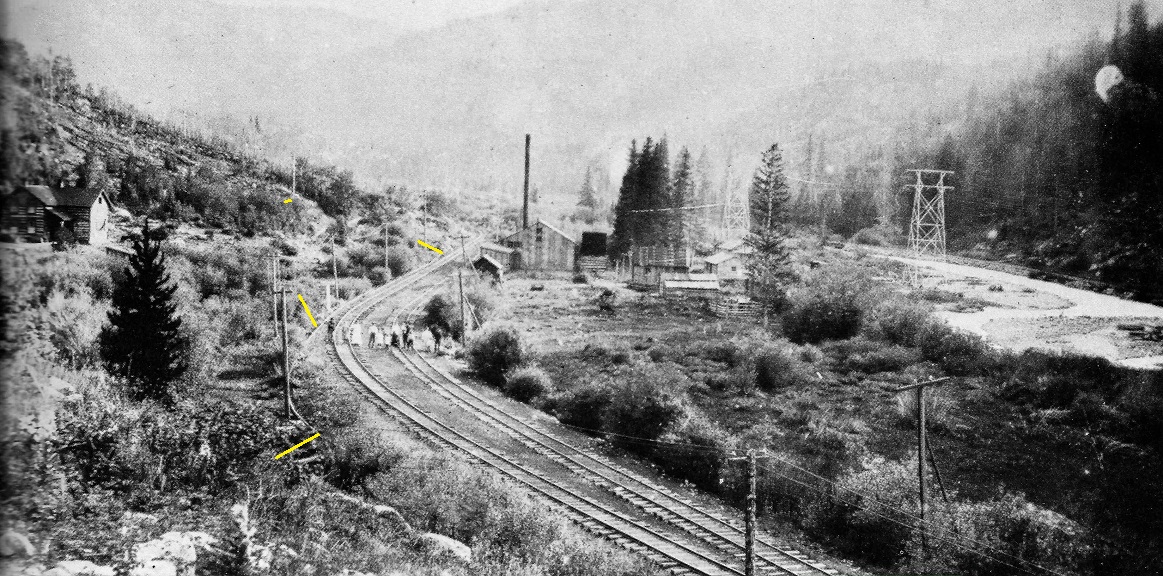 The colorized view of the Mary Varna tunnel opening that you posted: 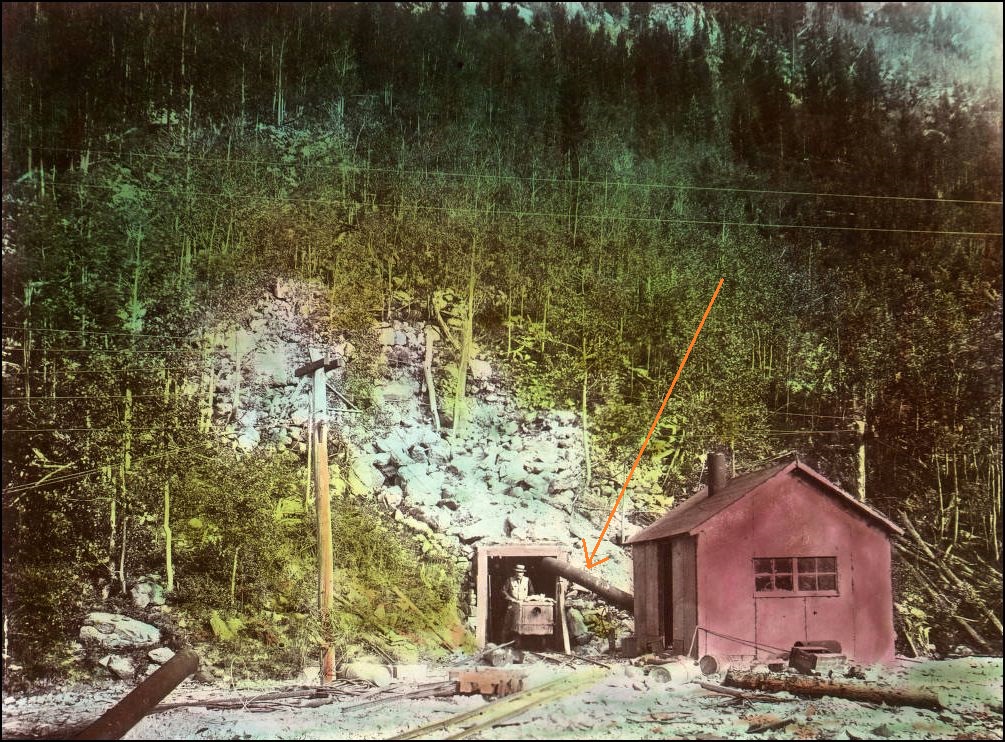 There is a large diameter pipe (orange arrow) entering the tunnel just above the miner's left shoulder. Was this really just to power pneumatic tools, or was it to ventilate the mine, specifically vertical shafts that might descend from the main horizontal tunnel? Jim
Jim Courtney
Poulsbo, WA |
Re: Ten Mile Stations of the D&RG -- Curtin and Compressed Air
|
Jim is right on the compressed air line to the mine portal
http://cdm16079.contentdm.oclc.org/cdm/fullbrowser/collection/p15330coll22/id/15834/rv/singleitem/rec/3 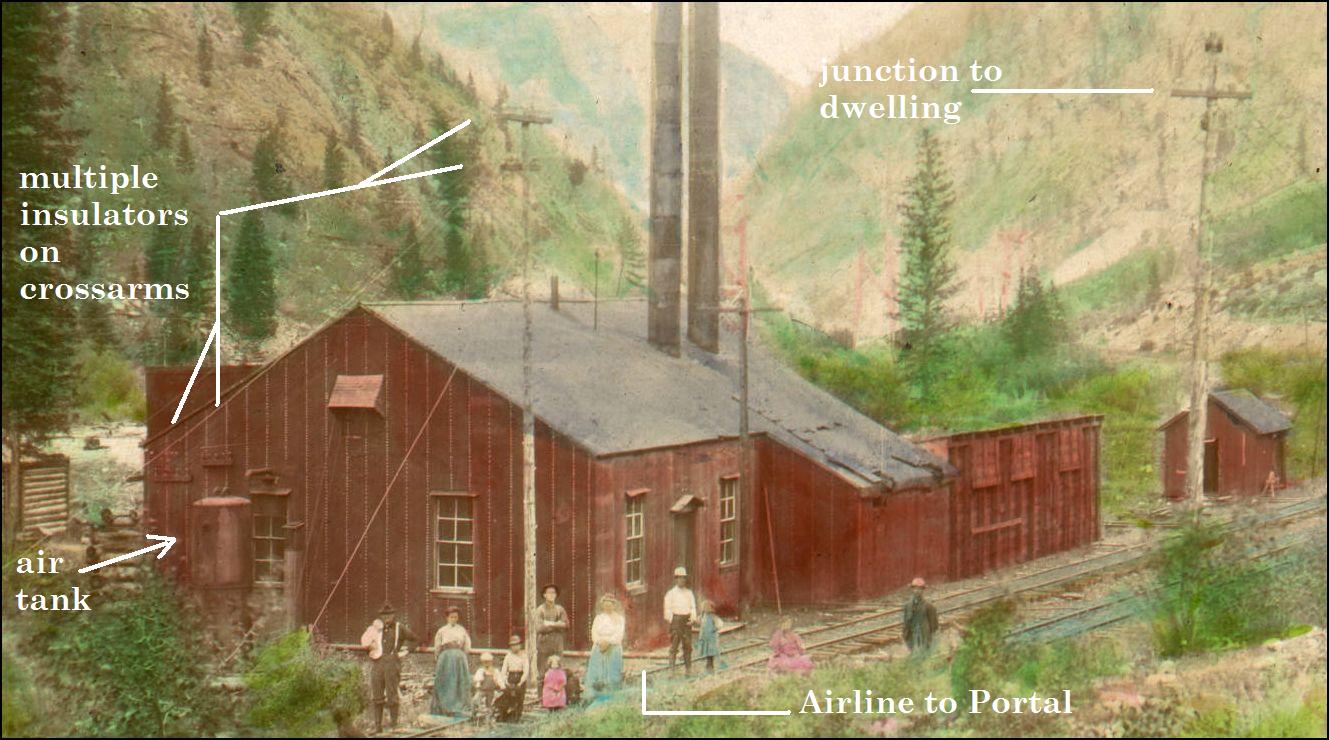 but note the complexity of power transmisson, way more than one small dynamo I'd say with certainty and certainly not telegraphy, and way more than was needed for the Boardinghouse, Office and Blacksmith shop etc.. As for the Portal picture, the shed would have contained the ventilation Blower driven by an Electric Motor, with certainty due the presence of the powerlines, a spare blower was at the Alma Lincoln in this view. CHS.X5488 http://digital.denverlibrary.org/cdm/fullbrowser/collection/p15330coll21/id/11490/rv/singleitem/rec/10 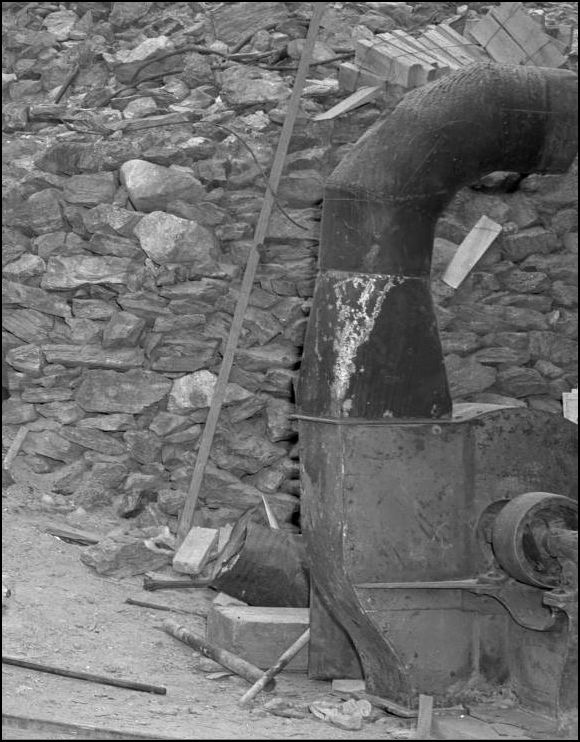 The best illustration of both pipes entering at the Portal is shown in the enlargement of the Lucania Portal up Fall River. X-60932 http://cdm16079.contentdm.oclc.org/cdm/fullbrowser/collection/p15330coll22/id/36846/rv/singleitem/rec/1 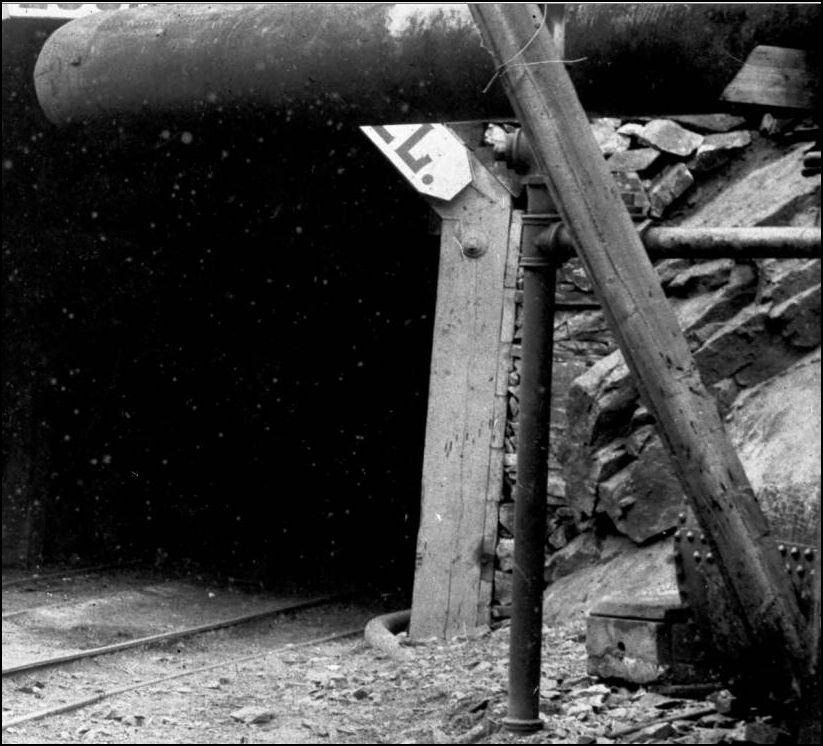 Basically like this generic mine shot shows the Airlines for Drills and Hoists were way smaller than the ventilation pipe. 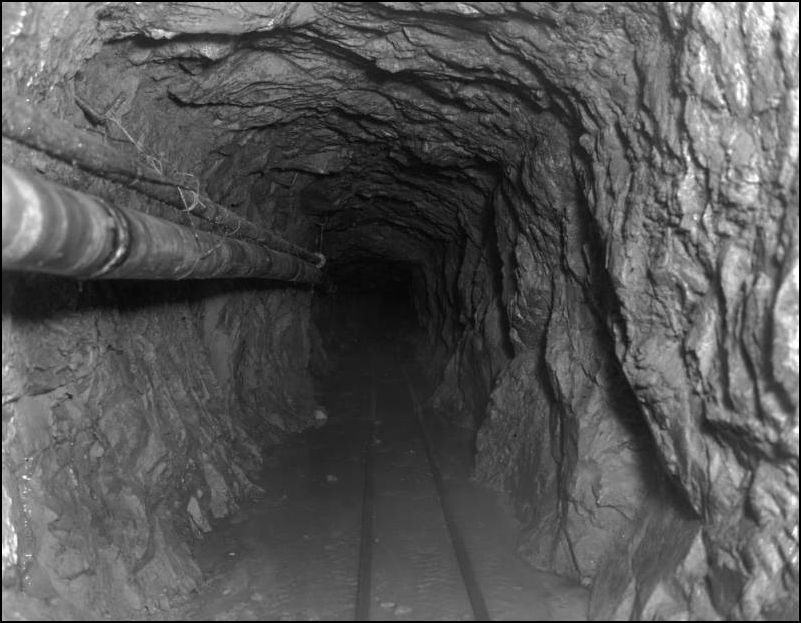 X-62262 http://cdm16079.contentdm.oclc.org/cdm/fullbrowser/collection/p15330coll22/id/14944/rv/singleitem/rec/2 other photos of Ventpipe which was illustrated in Doug's thread here http://c-sng-discussion-forum.41377.n7.nabble.com/Pipes-on-Flats-tp2980p3681.html
UpSideDownC
in New Zealand |
Re: Ten Mile Stations of the D&RG -- Sectionhouse site at Curtin
|
In reply to this post by Jim Courtney
I can't remember just how many times I've driven I-70 up the Ten-Mile since 1982, I always have the lofty ideal of taking matching photos of the locations Jim has put in here of Curtin yet as soon as I'm actually there it's always been a case of rubber-neck and "wow, this is soooo great" and I wizz up or down the canyon.
 GoogleMaps Streetview to the rescue. 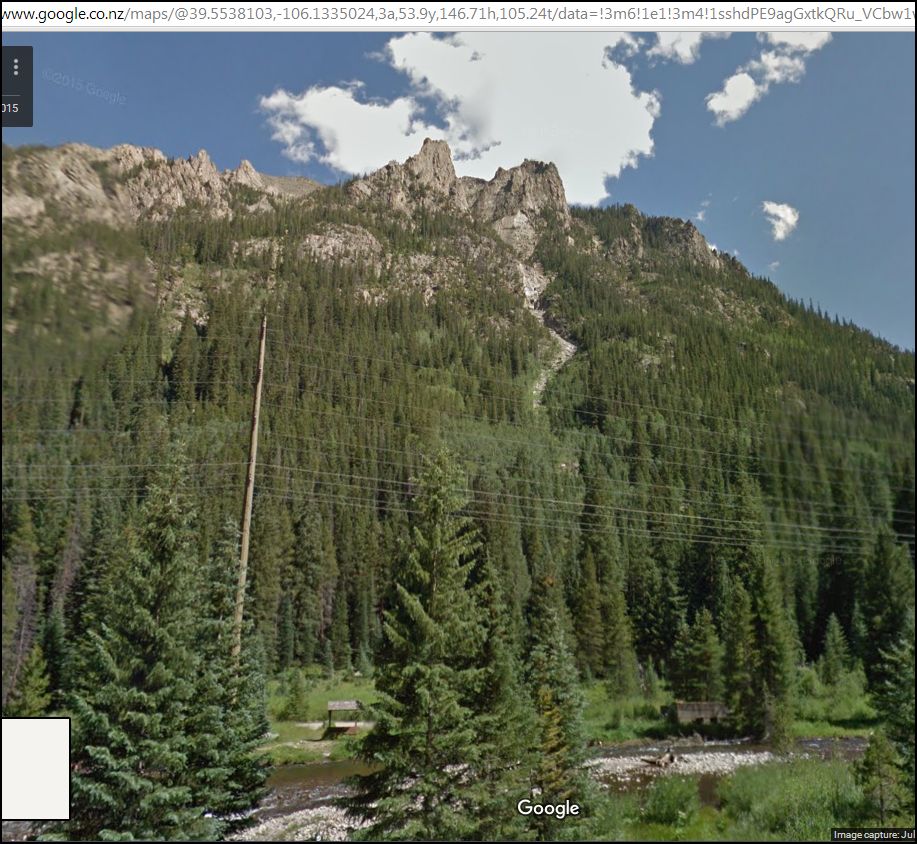 Now, is that the foundations of the Log Sectionhouse remaining?....on the right of the informative plaque.
UpSideDownC
in New Zealand |
Re: Ten Mile Stations of the D&RG -- Sectionhouse site at Curtin
|
Thanks Chris for pointing out the cross-arms and insulators on the actual building. I hadn’t noticed those before. Coupled with the electric lines at the adit fan house, I’m happy enough to say that it’s “clear” that the power plant produced both compressed air and elecy.
Cheers, Jeff. |
Re: Ten Mile Stations of the D&RG -- Curtin and Compressed Air
|
In reply to this post by Chris Walker
Great illustrations of compressed air vs ventilation air, Chris.
"Now, is that the foundations of the Log Section House remaining?....on the right of the informative plaque." I doubt that's the section house foundation, as the ruins in your photo are between the grade and the creek. The Section House was to the east of the grade and quite a bit uphill. If this is truly the site of Curtain, this could be the foundation for the compressed air plant that we are discussing. But Gilliland, in her descriptions of the mines along the C&S grade, specifically mentions foundation ruins for a small power house for the Mary Varna mine, located a bit downstream from Curtain. In her description of Curtain, she mentions no ruins. It is embarrassing, but I've walked that grade twice and biked it once, even stopped at that plaque area to rest, so I must have read it. But I don't remember anything about what was located there. 
Jim Courtney
Poulsbo, WA |
Re: Ten Mile Stations of the D&RG -- Lower Tenmile Canon, Reprise
|
This post was updated on .
In reply to this post by Jim Courtney
I just received one of the books that I ordered from Amazon: Images of America: Summit County, by Sandra F Mather, Ph.D. and the Summit Historical Society.
There are a few new images (to me) of lower Tenmile mines. King Solomon Tunnel 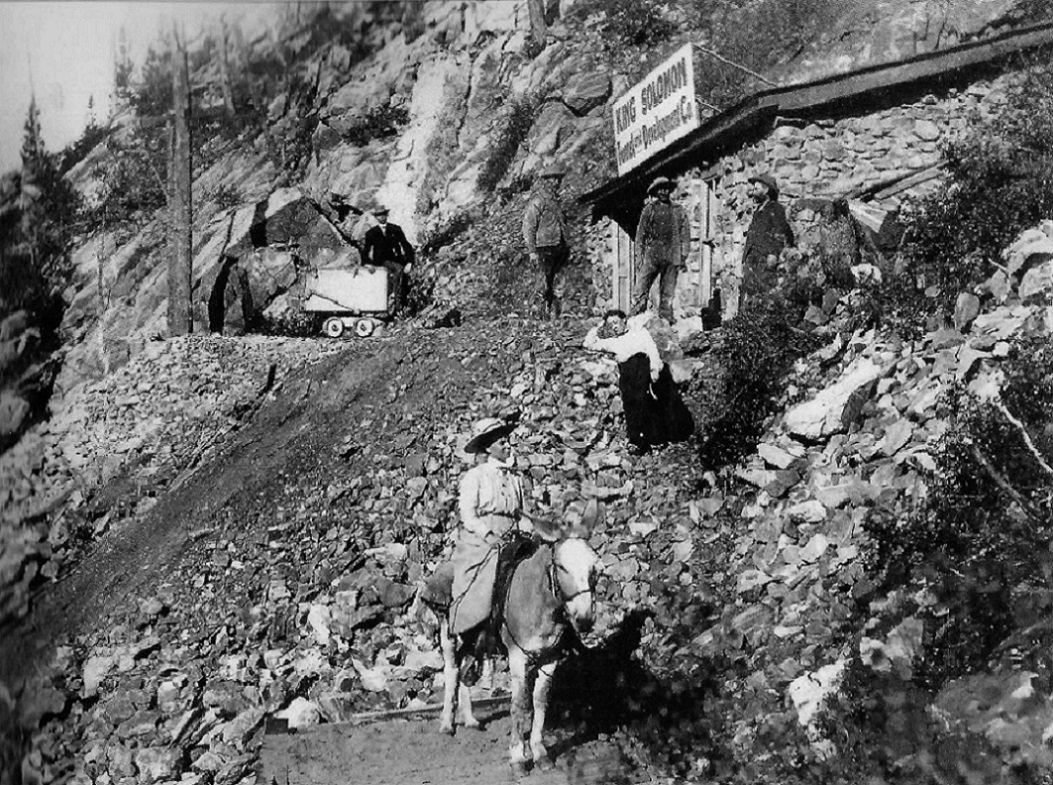 Ladies visit the tunnel entrance by burro-back. Per the caption, women were not allowed to enter the tunnel for fear of engendering bad luck. 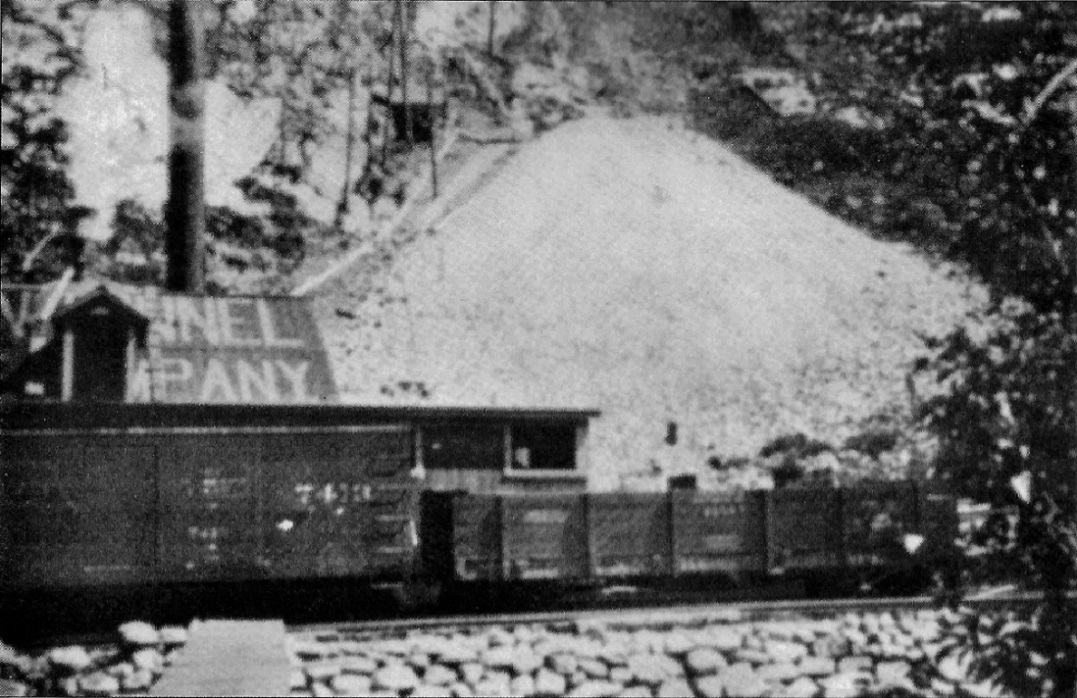 A later view of the coal spur and powerhouse. Not that the tailing pile is much larger than the view posted above. The power house has acquired at least one dormer and a new large stack. It appears that a coal storage shed has been constructed next to the spur. There is a 4-board St Charles coal car spotted at right. I think that the boxcar 7413 is one of the 26 foot Litchfield built cars, due to the box "The Colorado Road" herald located on the door of the car (the Litchfield cars were too short to allow the box herald to be located above the large "Colorado & Southern" lettering to the left, as on the other inherited boxcars). Mary Varna Mine 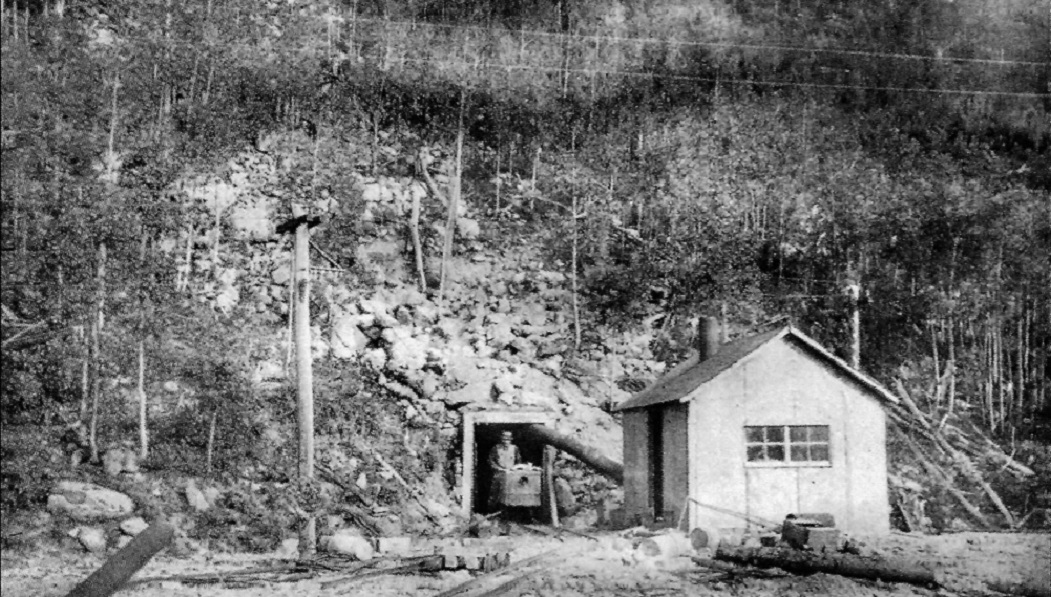 The original B&W image that was colorized as in the post by Chris.
Jim Courtney
Poulsbo, WA |
Re: Ten Mile Stations of the D&RG -- Pipes on Jacks
|
This post was updated on .
An illustration as to how those ventilation pipes were transported to the mine portals:
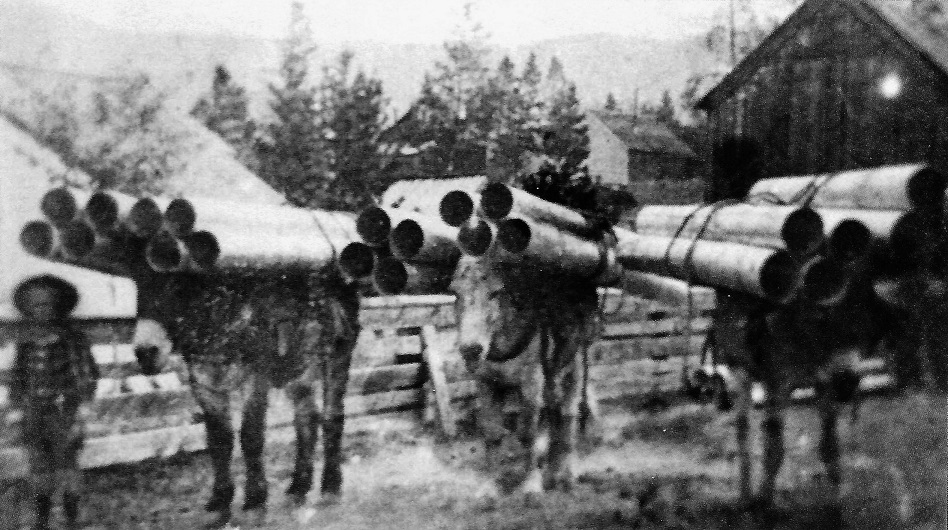 Images of America: Summit County, by Sandra F Mather, Ph.D. and the Summit Historical Society. A train of Jacks transporting pipe prepares to depart for the mines high above Tenmile Canyon.
Jim Courtney
Poulsbo, WA |
Re: Ten Mile Stations of the D&RG
|
In reply to this post by Jimmy Blouch
Another Wheeler map.
This from a D&RG valuation map showing after abandonment disposition entries. Shows source of water for water tank. Toward Dillon to the left. Jimmy 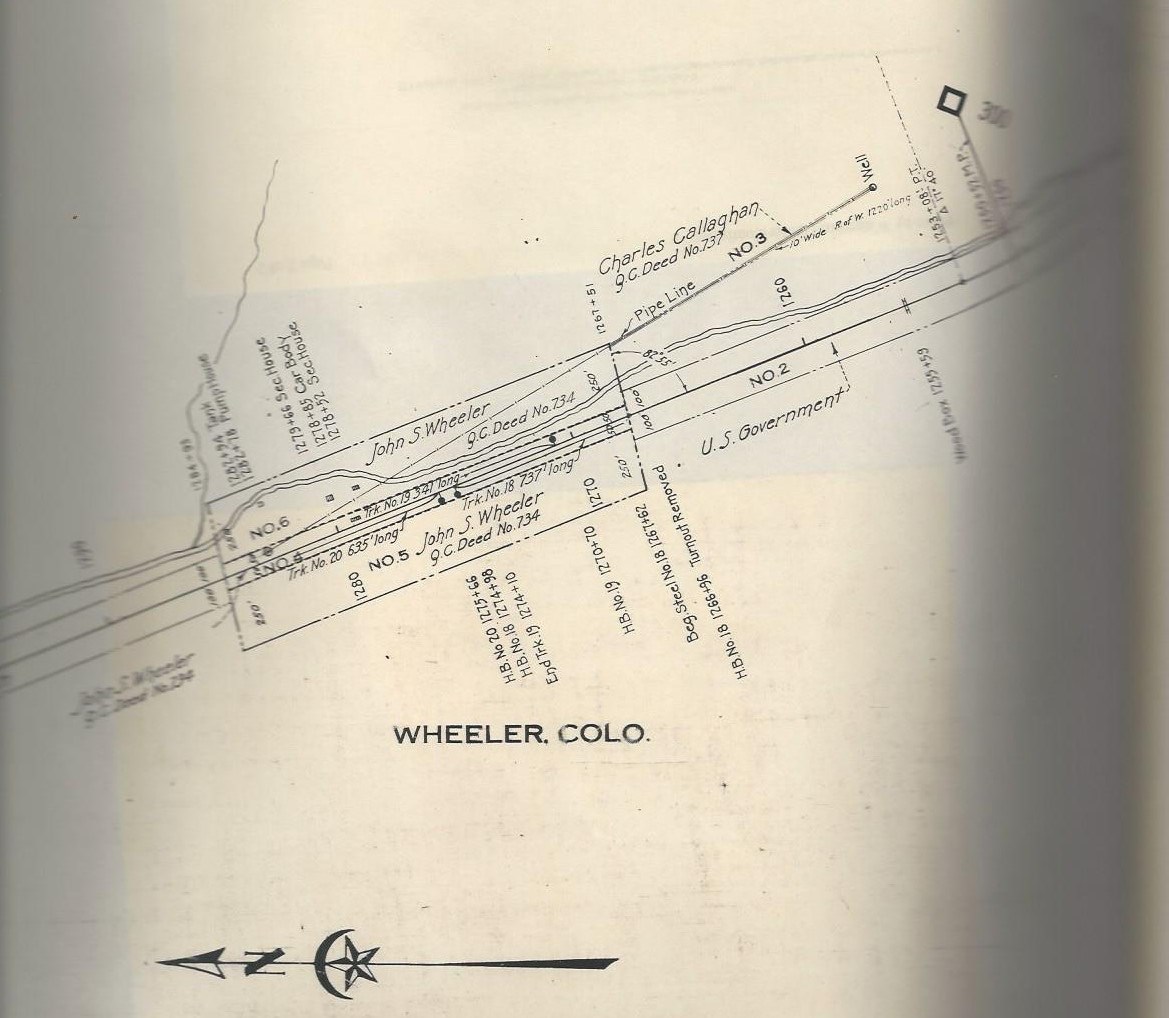
|
Re: Ten Mile Stations of the D&RG
|
I guess we now know why it is called "Wheeler."
Chris, fascinating stuff about ventilation and power. These details are absent from many models. Would a vertical shaft have a similar need for ventilation air, or does the stack effect help move fresh air down into the mine?
Keith Hayes
Leadville in Sn3 |
Re: Ten Mile Stations of the D&RG
|
In reply to this post by Jimmy Blouch
This from map covering entire line between Leadville and Dillon, showing both D&RG and C&S.
It appears this info might have been put together during D&RG abandonment. Jimmy 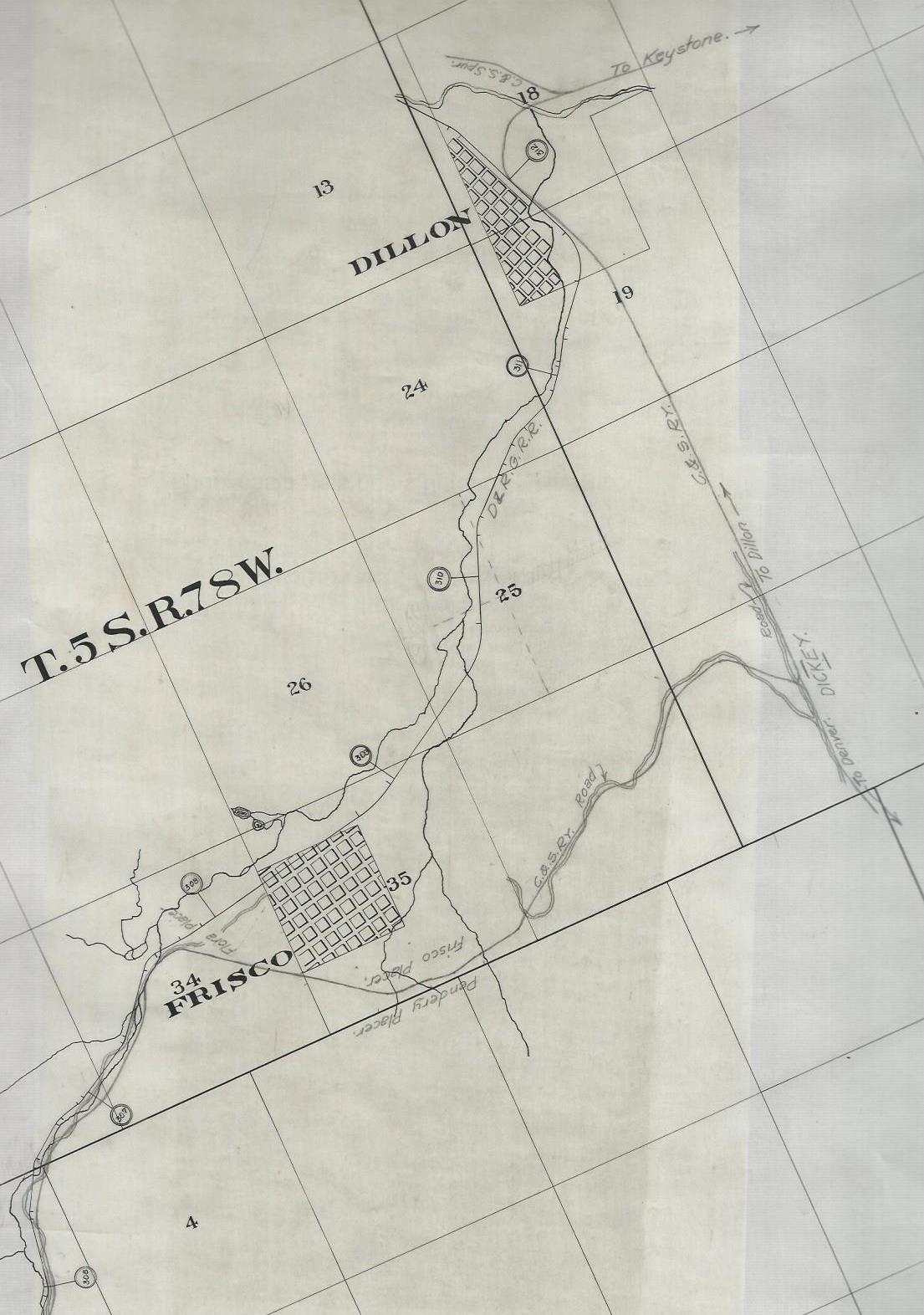
|
Re: Ten Mile Stations of the D&RG
|
Was the original Frisco South Park depot a Hallack Bros.boxcar body?
|
Re: Ten Mile Stations of the D&RG
|
In reply to this post by Keith Hayes
A complex subject Keith and worthy of several chapters in the Mining Engineers Handbooks.
Yes the Shaft can ventilate using the chimney effect but basically depends on the depth and complexity of the workings and number of levels, number of miners working and the number of dead-end workings to affect the air quality or lack of it. Miners drove crosscuts and raises between levels to improve the airflow, compartmentalised the shafts, drove seperate vent shafts and/or opened a horizontal drainage adit if possible in the terrain. The Comstock started using blowers in the 1870's to force ventilate the shafts (Roots blowers were invented for coal mines in 1860). Some early tunnels were vented with pipe connected to a furnace outside and above the portal to use the draught created by the stack to suck out the fumes.
UpSideDownC
in New Zealand |
Re: Ten Mile Stations of the D&RG -- Pipes on Jacks
|
In reply to this post by Jim Courtney
Brilliant find Jim.
UpSideDownC
in New Zealand |
Re: Ten Mile Stations of the D&RG -- Pipes on Jacks
|
Love the jack train bazookas. Off to fight ISIS, I suppose? ;)
(And Jimmy, those last two maps are really beautiful, even aside from the content. Particularly the Wheeler one.) Cheers, Jeff. |
Re: Ten Mile Stations of the D&RG -- Pipes on Jacks
|
Naw,they were resupply for Bob Burns.
|
Re: Ten Mile Stations of the D&RG
|
In reply to this post by Jimmy Blouch
While at Dillon here is something to ponder
Jimmy 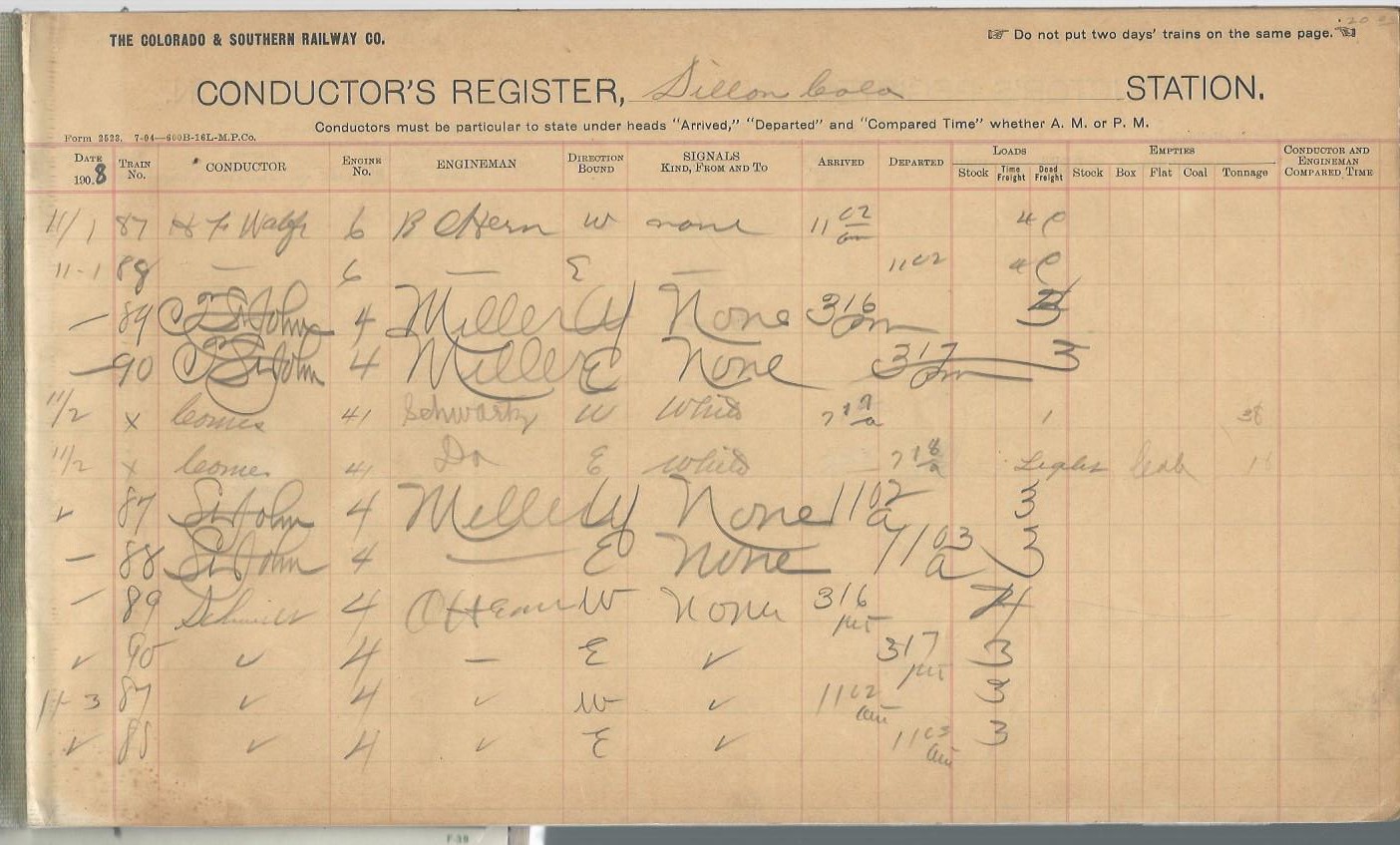
|
Re: Ten Mile Stations of the D&RG
|
Thinking cap on...
11/01/08 (Sunday) - 4 trains, 87 (W) which turns into 88 (E) late morning and 89 which turns into 90 mid afternoon 11/02/08 (Monday) - two extras, white flags, X41W and X41E, early morning, consist engine running light? Different enginemen same coductor looks like. - 87 thru 90 again, same times as day before 11/03/08 (Tuesday) - 87 and 88. 89 and 90 presumably on the next page Can't quite figure out the "LOADS" column or the markings (number of cars?)... stock I get, but what about Time Freight and Dead Freight. I thought I'd gathered thru this and other threads that traffic thru Dillon was generally mixed. I imagine someone knows the typical consist of 87 and 89, etc. Cool stuff. Mike |
Re: Ten Mile Stations of the D&RG
|
This post was updated on .
In reply to this post by Jimmy Blouch
Whoa, Jimmy!
If I catch your drift, the passenger trains, with engines 4 and 6 on the stub passenger runs (87-88-89-90), carried freight cars of both "time freight" and "dead freight" between Dickey and Dillon, making it unnecessary for freight engines to do the work. And we're talking 3-4 cars per passenger train! Strange, it often appears, the trains arrive at Dillon with 3 loads and depart with 3 loads. Are they really setting out / picking up the cars at Dillon, or carrying the cars in the passenger train as through shipments between Como and Leadville, just along for the ride, down and back up the branch? But on 11/02/09, Cooke engine 41 delivered 1 car that must have been overlooked at Dickey, taking only one minute for a set out at Dillon, departing Dillon "light". Either way, it makes operations on the Dillon/Keystone branch take on a completely different look during busier times. Alternatively, are the conductors simply logging in the number of passengers cars in the train, generally 3-4 cars, being sloppy in noting them as time or dead freight, as there is no column for passenger cars? The trains arrive and depart in the span of only one minute (Sure . . . looks good on paper, for management!), so set-outs and-pick ups seem unlikely. Jim
Jim Courtney
Poulsbo, WA |
|
In reply to this post by Jimmy Blouch
Need to talk to Jimmy on that Conductor register! I would say that that engineman was Jumbo Miller and the conductor was Thomas StJohn. On 11/2/08 that would be Buddy Schwartz, latter killed on Boreas Pass near the Davis Overlook. Schwartz was noted for naming A.A. Anderson, Browine Anderson because as a kid A.A. Anderson had a brown jacket and looked like a "little brownie".
The Anderson family story is that Schwartz told young Anderson to go to Como and sign up on the C&S. Tom Klinger |
Re: Ten Mile Stations of the D&RG
|
In reply to this post by Jim Courtney
When I was posting D&RG train movements on another site, passenger consist was always referred to as loads. On this register most likely 3 passenger cars made up the consist both directions. The extra car of the 4 car consist was probably freight. Total car count was placed without regard as to column title. Jimmy |
«
Return to C&Sng Discussion Forum
|
1 view|%1 views
| Free forum by Nabble | Edit this page |

